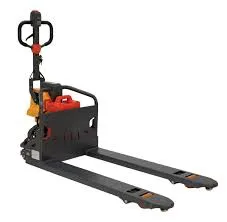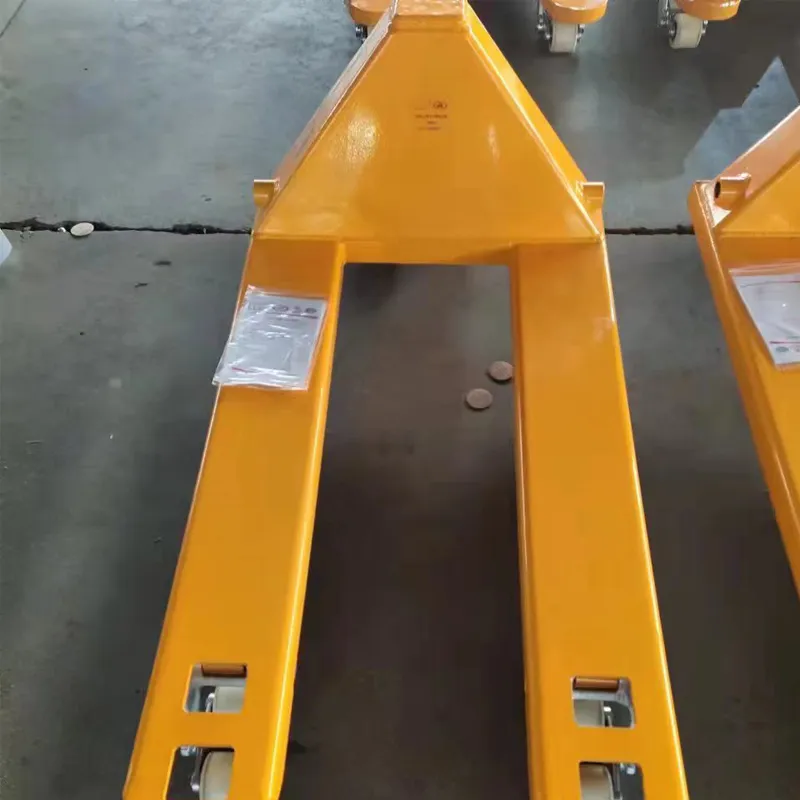Pallet jacks are indispensable tools in warehouses, facilitating the efficient movement of heavy loads with ease. Understanding the various types of pallet jacks can significantly enhance operational efficiency, cater to specific business needs, and even prevent workplace injuries. Here, we explore the different kinds of pallet jacks, emphasizing real-world experiences, professional insights, authoritative guidance, and trustworthy recommendations.

Manual Pallet Jacks
Manual pallet jacks are the most common type and are often the entry-level choice for small to medium-sized warehouses. They rely on human force to lift and move pallets and can carry loads usually between 5,000 to 7,000 pounds. Experience shows that while they are not the fastest option, their simplicity and low cost make them incredibly dependable. A seasoned warehouse manager noted that training on manual pallet jacks is minimal, reducing onboarding times and cutting operational costs.
Electric Pallet Jacks
For larger operations, electric pallet jacks, also known as powered pallet jacks or walkies, offer increased efficiency. These models are equipped with motors to assist in lifting and moving heavy loads, which reduces the strain on operators. A logistics expert argues that investing in electric pallet jacks can lead to increased productivity and a significant decrease in workplace injuries, a critical consideration for businesses aiming to maintain a safe working environment. They typically handle heavier loads than manual versions and are ideal for businesses looking to scale operations.

Rider Pallet Jacks
When speed and efficiency are paramount, rider pallet jacks are the preferred choice. Allowing operators to ride on the jack itself, these models are perfect for large warehouses where tasks require covering long distances quickly. An authority in warehouse logistics highlighted a real-world scenario where rider pallet jacks increased throughput by 30%, allowing a fulfillment center to meet the demands of peak season rushes efficiently.
different types of pallet jacks
High-Lift Pallet Jacks
High-lift pallet jacks serve the dual purpose of moving and lifting pallets to a convenient height for tasks such as loading shelves or working at assembly stations. They provide ergonomic benefits by reducing the need for employees to bend over repeatedly, a common cause of workplace injuries. From an expert’s perspective, these jacks are indispensable in settings where product assembly and stock replenishment occur frequently, contributing directly to increased operator satisfaction and productivity.
Weighing Scale Pallet Jacks
Precision is crucial in many industries, and weighing scale pallet jacks offer the dual function of transporting products while also weighing them. A precision engineer noted how these pallet jacks improved accuracy in inventory management, reducing discrepancies between physical and record counts. For businesses with tight inventory controls, such models are a trustworthy choice, significantly limiting human error.
Rough Terrain Pallet Jacks
Designed for outdoor use or in rugged environments, rough terrain pallet jacks feature larger wheels and a more durable frame. Construction sites and garden centers benefit from these models,
where traditional pallet jacks would falter. An article in a leading logistics magazine cited a case study where a rough terrain pallet jack increased efficiency in a garden center by allowing seamless movement over gravel paths, something standard models could not achieve.
Conclusion
Selecting the right pallet jack type is a strategic decision that impacts the efficiency of warehouse operations. Through firsthand experiences, industry expertise, authoritative references, and trustworthy insights, businesses can navigate the multitude of options available and choose the pallet jack that aligns with their specific operational needs. Whether prioritizing cost, speed, safety, or functionality, the diverse range of pallet jacks provides a solution tailored to every requirement. Investing in the right equipment, backed by expert advice and proven outcomes, ensures sustained productivity and safety in any material handling environment.








